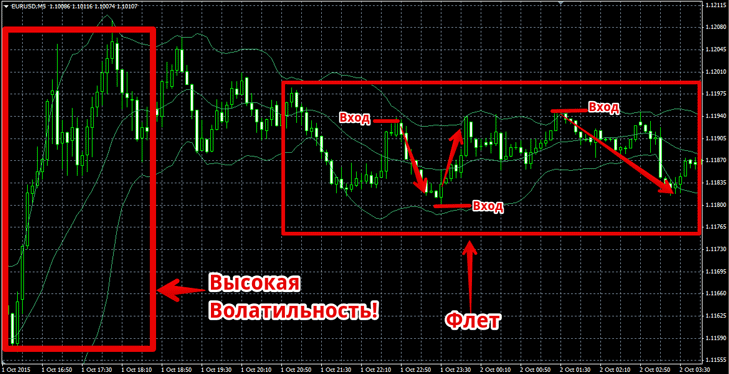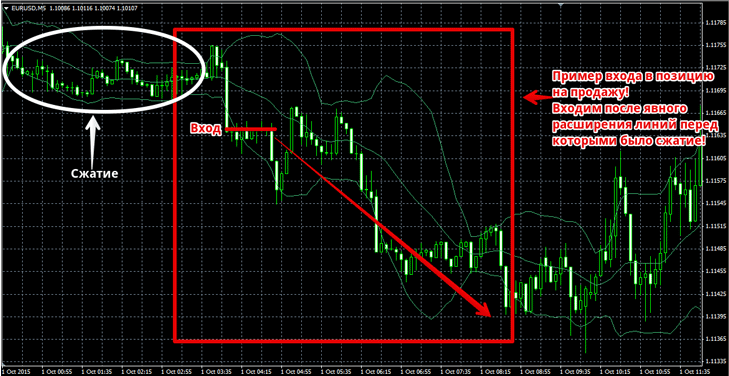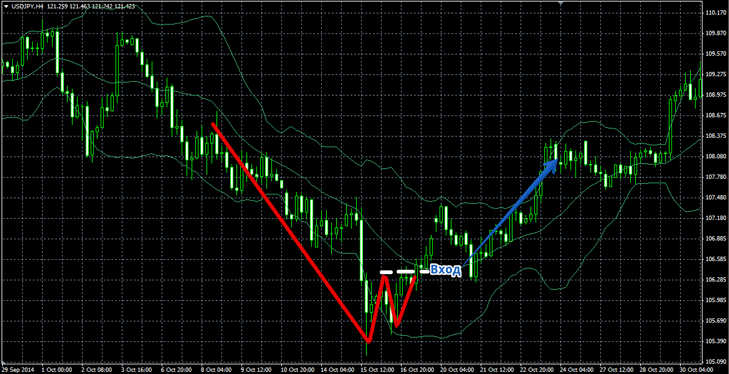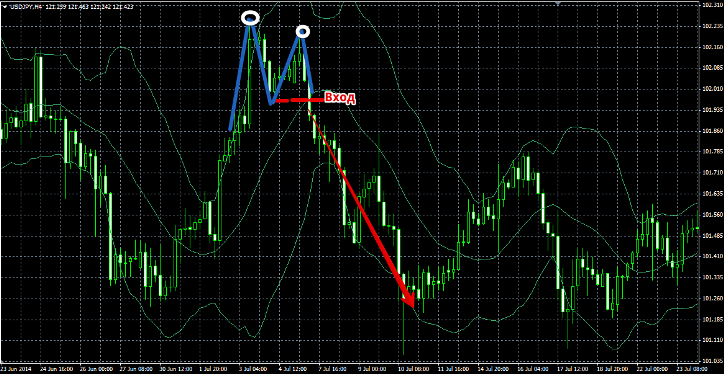Bollinger Strategy
We have all seen many times how Bollinger Bands are used in various trading strategies. The tool is so versatile and gives such a large number of signals that it can be used by both scalpers and pip traders, as well as traders using swing trading .
The tool is so versatile and gives such a large number of signals that it can be used by both scalpers and pip traders, as well as traders using swing trading .
I decided not to focus on the historical nuances and general properties of the indicator, since the general provisions were written earlier in the Bollinger Bands article, so let’s get straight to the point.
If you take the time to get acquainted with the book “Bollinger on Bollinger Bands”, you will be faced with the fact that even the author himself does not give clear recommendations on when to enter a buy or sell position.
John Bollinger gives nothing more than recommendations for its use, and how exactly to use the indicator from all the variations of signals is up to you, depending on your style and the situation on the market.
Therefore, the Bollinger strategy resembles more a summary of recommendations for use than a clear trading strategy. You may be familiar with some of the uses, but I hope you can learn something new that you never knew before.
The first option, which is popular with almost all scalpers, is trading inside the channel, or to be more precise, it is a rebound from its borders. This is due to the fact that, as Bollinger himself states, the price spends almost all its time inside and extremely rarely deviates beyond its borders.
However, when choosing such a strategy, you need to find areas of flat or accumulation. You can encounter this phase of the market when the bands have narrowed after they were greatly expanded, and the chart was volatile before that.
To formulate the rules more clearly, you need to sell when the price touches the upper limit, and buy when it touches the lower limit. The profit is fixed after touching the opposite line, and the stop is set outside the channel. I suggest you look at the picture below in more detail:
 The second method is effectively used by traders who trade intraday and swing. Its essence is that you enter a position on the continuation of a trend, or, more simply put, enter along with the trend. According to the Bollinger strategy, if the price has overcome the upper limit and the bands begin to expand due to high volatility , this is an excellent chance to enter a buy position.
The second method is effectively used by traders who trade intraday and swing. Its essence is that you enter a position on the continuation of a trend, or, more simply put, enter along with the trend. According to the Bollinger strategy, if the price has overcome the upper limit and the bands begin to expand due to high volatility , this is an excellent chance to enter a buy position.
When the price overcomes the lower border and the bands expand, it is necessary to enter a sell position. As a rule, traders who use such tactics set their stop at the central line or at the nearest local minimum or maximum. Take a closer look at the picture below:
 In addition to the standard approach to using Bollinger Bands, the indicator is used to search for various patterns. So, for example, the author of the book describes the two most popular reversal patterns , namely W-shaped and M-shaped. A W-shaped pattern is formed in a bear market and is characterized by two lows, with the first low going beyond the extreme lower band and the second low forming inside the channel.
In addition to the standard approach to using Bollinger Bands, the indicator is used to search for various patterns. So, for example, the author of the book describes the two most popular reversal patterns , namely W-shaped and M-shaped. A W-shaped pattern is formed in a bear market and is characterized by two lows, with the first low going beyond the extreme lower band and the second low forming inside the channel.
This figure is nothing more than a “Double Bottom”, which is written about in any book on technical analysis but with the use of a filter. If such a pattern has formed in front of you, this is a signal for a trend reversal, so you should enter a buy position. An example is shown in the picture below:

The M-shaped figure is a clear analogue of the figure discussed above, and the only difference between them is that the M appears on an uptrend. To enter a sell position, the first peak formed must go outside the Bollinger channel, and the second peak must form inside it. An example of the model is shown in the picture below:
 Despite the multitasking of the tool and the number of possible signals, even John Bollinger himself said: “Finally, touching the tapes is exactly that - touches, not signals,” so it is necessary to take into account all the fundamental factors, use additional indicators and figures to confirm the signal , rather than using it alone.
Despite the multitasking of the tool and the number of possible signals, even John Bollinger himself said: “Finally, touching the tapes is exactly that - touches, not signals,” so it is necessary to take into account all the fundamental factors, use additional indicators and figures to confirm the signal , rather than using it alone.

